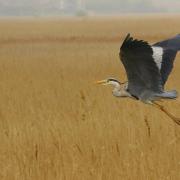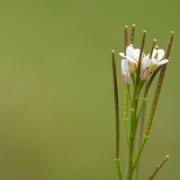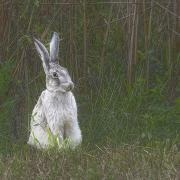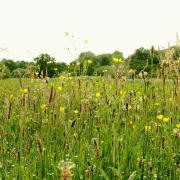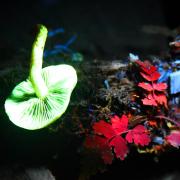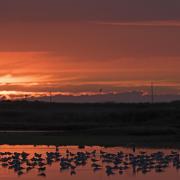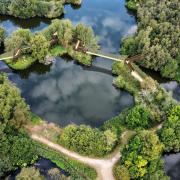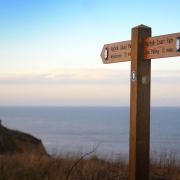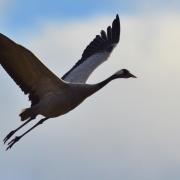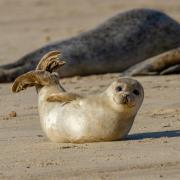David Hooton on the ever expanding deer population that is his life's work
The deer cost of the kings of the forest
To most people, they are magical creatures that grace our landscape. For David Hooton though, the ever expanding deer population is his life’s work as he attempts to balance the needs of man and nature, writes Rachel Buller.
pictures: sonya duncan
Sitting at the large farmhouse table in the middle of his kitchen, David Hooton’s love of nature and the forest which encircles his home is clear to see. For the past six and a half years, he has worked as the East of England Deer Liaison Officer.
And while most of us – David included – consider deer as creatures to be admired and treasured, with populations now rising two-fold the animals are increasingly causing major problems in our countryside.The Deer Initiative, a national organisation which works closely with a number of partners including the Forestry Commission, RSPCA and Defra, manages the country’s wild deer population. For David, his job for the initiative means working closely with local landowners across East Anglia, to advise and support them, as well as working closely with the Highways Agency to try to reduce the enormous number of accidents on our roads caused by deer.
“I love deer, they are beautiful creatures, but often people don’t see the damage they can do to our countryside. There are just too many,” he says.
The Deer Initiative says the financial impact of the deer in terms of woodland destruction, agriculture and road accidents costs between �8m and �10m a year. It is a staggering amount, but with deer numbers doubling in the past 20 years, it is clear that this figure will only increase unless action is taken.
“We are talking about thousands of deer in Thetford Forest alone,” says David. “We would need to cull at least 20pc a year just to stand still.”
Much of the damage to our woodland is done on the forest floor, to the
low level vegetation and fresh regrowth which the deer love to graze.
“The flowers are being taken, the coppice shoots are not re-growing and regeneration is not happening – what might look very healthy higher up, does not on inspection closer to the ground. That is where some birds nest and feed, so we are also losing some bird species to the area.“The Norfolk Wildlife Trust has created two metre fenced-off experimental enclosures in some areas which are protected from deer browsing. When you compare the growth outside of the enclosure you can see very clearly the damage being done.”
David works closely with local farmers to lessen the financial impact of having a large wild deer population occupying their land. “One farmer had planted five tonnes of seed potato, and only harvested two tonnes. The previous year he planted 75 tonnes of sugar beet a hectare and got 25 tonnes back. It was purely down to fallow and red deer.”
But as he explains, it is not simply the cost of lost crops, but balancing that against the cost of culling the animals and successfully managing them.
“The economics have to stack up for landowners. Small amounts of browsing throughout the winter might not cause a massive economic loss, so I try to help them work out what they are willing to accept in terms of damage balanced against the cost of culling.”
And it is an expensive, labour-intensive process. Each cull can take between five and 15 hours per deer.One thing that the Deer Initiative is working hard to achieve is to get landowners together to tackle the problem. “The more people you have on the ground looking for the deer, the more chance you have of finding them faster and the cost goes down.
“We are not involved in the cull itself, but can get neighbouring landowners around the table looking at maps, seeing where the deer are moving to and from and taking practical measures.”
He admits there is still a problem with poaching, by a combination of organised gangs and those doing it for fun across the stubble fields, but he says their excuse that the deer would be killed anyway is never a valid defence. “It is not controlled and it is certainly not safe, for the public or the animal.”
So how do landowners cover the enormous costs of controlling the deer on their land?
“Some of the big estates employ people to cull the deer but a lot of private landowners can’t afford that. “Often they work with fully trained stalkers, letting them bring stalking parties, which are very popular, or letting them have venison.” A key area of the Deer Initiative’s work is to reduce the enormous number of road accidents involving deer. These see hundreds of motorists injured, and in some instances killed, every year. There are 10,000 deer incidents recorded annually on the roads in the east of England alone.
Six years ago, the initiative set up a dedicated Deer Collisions Project to carry out extensive research and data collection about the impact of deer collisions on our roads, both on deer populations and motorists.“Deer do become road aware, but with groups you tend to see the first one looking carefully and waiting for a gap in the traffic to cross safely, and then the others all following blindly.
“If you see one deer ahead, slow down. There are always likely to be more, especially at dawn and dusk,” he says.
“Wildlife warning signs are up for a reason. We work with the police and council to find particularly dangerous spots, looking at accident data and putting in speed reduction measures
.
“On average speed has dropped by about seven or eight miles an hour in those spots, which may not sound much, but it lessens the severity of an accident should you hit a deer.”The initiative is looking at many innovative road safety ideas, one such scheme being tested uses hi-tech beams set either side of the road along an opening in the verge where deer are known to cross. When a deer passes through it and heads for the road, an alert flashes on a large sign to warn on-coming motorists. This, combined with a flashing 50mph sign, has already proved extremely effective.
“If there is an animal on the side of the road you are warned by the flashing sign; if you are going over 50mph, it also flashes. So you are instantly aware and more vigilant. I don’t know if it will be introduced to this region, but it shows the sort of ideas we are looking at.” The work of the initiative might be low key, but it is essential to the economy and to local biodiversity. After all, as David himself puts it with a smile, “the deer are not going anywhere”.
For more information see www.thedeerinitiative.co.uk
A deer, sweet home
Down a bumpy red stony track in the heart of Thetford Forest live David Hooton and his young family. He has lived at the beautiful 1840s cottage, one of a row of three, since he began working for the Forestry Commission in 1992 as a ranger, aged just 21.
With imposing trees all around and wild looking patches of open scrubland occasionally breaking the view, its remoteness might put off some people. But not David, he simply fell in love with it.
“It came with the job, and about eight years ago we decided we liked it so much that we bought it,” he says with a smile.
Now he and wife Nicky couldn’t imagine settling anywhere else, and besides, he says, they have got two sets of neighbours so they’re not entirely alone.
“I was brought up in Huntingfield in Suffolk, about a quarter of a mile from the nearest house, and Nicky was also brought up in the middle of the Fens so she is used to this way of life.“Sometimes I think it would be nice not even to have any neighbours, but they’re great and it’s good for the kids.“We have always been into the outdoor life, things like camping, sailing and walking, and Nicky works for the Forestry Commission on the recreational side, so it’s perfect for us.”
The back garden is vast, with room for the chickens, goats, the three dogs that wander around like kings of their own castle, plus the various other pets. And their two sons, aged one and four, love living in such an exciting location, says David.
There is also a large fenced-in vegetable patch “to protect it from the deer”.“We hear them at night, tucking into the apples from the trees,” he laughs.
The huge, comfy kitchen gives an insight into a family life clearly led by the great outdoors, with the head of a striking-looking muntjac deer commanding a prominent space on the wall.
It isn’t quite the stately home look though, a paper crown covers the top of its head and two strange looking medals hang from its neck.
“I think one’s from a sponsored toddle-a-thon for Barnardos, and one from a charity event my wife did. I’m guessing the crown comes from nursery,” he says. “I shot the deer, but I didn’t mount it, that’s a whole different skill. It’s beautiful isn’t it?”
He says that eating seasonal food from the land is important, but admits that his wife has probably had enough of venison.
“You can do anything with venison and I love it. But when I was a ranger I often did the cooking as I finished earlier in the afternoon, and it was always venison or some sort of game. I think Nicky got a bit fed up with it. The children still love it though and we are quite open about where food comes from.”



